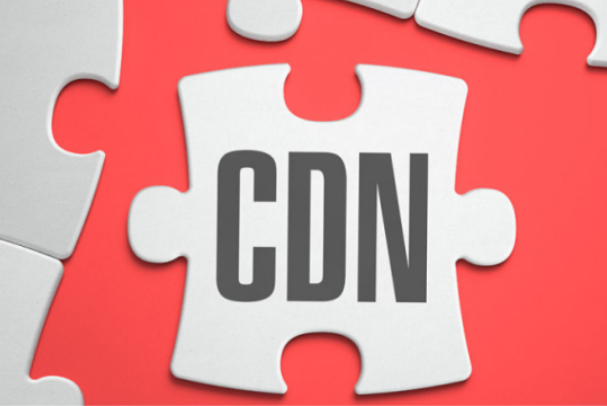Challenges and Solutions for CDN in Multi-Device Environments

The rapid proliferation of internet-connected devices, including smartphones, tablets, desktops, IoT devices, and smart TVs, has transformed the way content is consumed. For businesses aiming to provide seamless user experiences across this diverse ecosystem, Content Delivery Networks (CDNs) play a crucial role. However, managing content delivery in multi-device environments presents unique challenges that require tailored solutions.
This article explores the key challenges faced by CDNs in multi-device environments and provides actionable strategies to address them.
1. Challenges of CDN in Multi-Device Environments
1.1 Device Diversity
The variety of devices with different screen sizes, resolutions, and performance capabilities requires content to be delivered in formats optimized for each device.
Example: A video streamed to a smartphone should use a smaller resolution compared to a smart TV.
1.2 Varied Network Conditions
Devices operate under diverse network conditions, from high-speed fiber connections to mobile data and public Wi-Fi. Ensuring consistent performance across these conditions is challenging.
Impact: Poor network optimization can result in buffering, slow load times, and degraded user experience.
1.3 Complex Content Requirements
Dynamic and interactive content must adapt to the device’s capabilities, such as:
Browser compatibility.
Hardware limitations.
Operating system constraints.
1.4 Security Challenges
Different devices pose varied security risks, especially in IoT environments where devices might lack robust security protocols.
Threats: Data interception, unauthorized access, and device-specific vulnerabilities.
1.5 Scalability and Traffic Management
Handling traffic surges across multiple device types, particularly during live events or product launches, puts significant strain on CDNs.
Example: A global sporting event streamed to millions of devices simultaneously.
2. Solutions for CDN Optimization in Multi-Device Environments
2.1 Adaptive Bitrate Streaming
For video content, use adaptive bitrate streaming (ABR) to dynamically adjust the video quality based on the user’s device and network conditions.
How it works: ABR detects the user’s available bandwidth and switches to an appropriate video quality to prevent buffering.
Result: Ensures smooth playback on all devices.
2.2 Responsive Design and Content Optimization
Integrate responsive web design principles with CDN delivery to serve optimized content for different devices.
Strategies:
Use image optimization tools to deliver images in appropriate resolutions and formats (e.g., WebP for modern browsers).
Implement lazy loading to reduce load times for devices with limited processing power.
2.3 Edge Computing for Real-Time Adaptation
Deploy edge computing capabilities within CDN nodes to process content closer to the user.
Advantages:
Dynamic content adaptation based on device type.
Reduced latency for interactive applications like gaming or e-commerce.
2.4 Intelligent Routing and Load Balancing
Use intelligent traffic routing to direct users to the nearest and least-congested CDN node, ensuring faster load times regardless of device type.
Example: A smartphone user in a rural area is routed to the optimal CDN edge server based on current network conditions.
2.5 Security Enhancements
Ensure robust security measures are in place to protect data and devices:
Enable SSL/TLS encryption for secure data transmission.
Deploy Web Application Firewalls (WAFs) to block malicious traffic.
Use rate limiting to prevent abuse from IoT devices.
2.6 Implementing Multi-CDN Strategies
For businesses with global reach, adopting a multi-CDN strategy ensures better redundancy and performance optimization for various device types.
Benefits:
Higher reliability through redundancy.
Improved coverage in regions where specific CDNs perform better.
3. Best Practices for Multi-Device CDN Optimization
3.1 Device-Specific Testing
Regularly test website and application performance on a wide range of devices to identify bottlenecks.
3.2 Real-Time Monitoring
Leverage CDN analytics tools to monitor metrics like:
Latency.
Cache hit ratio.
Error rates.
3.3 Utilize AI and Machine Learning
Implement AI-driven solutions to predict traffic patterns and optimize CDN configurations dynamically.
4. Real-World Applications of CDN in Multi-Device Environments
4.1 E-Commerce Platforms
Challenge: Serving millions of users across desktops, smartphones, and tablets.
Solution: Responsive design and edge computing for real-time pricing updates.
Result: Improved conversion rates and reduced cart abandonment.
4.2 Streaming Services
Challenge: Delivering buffer-free video across smart TVs, gaming consoles, and mobile devices.
Solution: Adaptive bitrate streaming and intelligent routing.
Result: Higher user retention and satisfaction.
4.3 IoT Ecosystems
Challenge: Handling real-time data exchange across a network of connected devices.
Solution: Edge computing and robust security protocols.
Result: Faster data processing and improved reliability.
5. Future Trends for CDN in Multi-Device Environments
5G Integration: Faster network speeds will require CDNs to handle increased traffic volumes and higher-quality content.
Enhanced AI Capabilities: AI-driven CDNs will provide more precise content optimization and delivery.
IoT-Specific CDNs: Tailored solutions for managing the unique demands of IoT ecosystems.
Green CDNs: Energy-efficient CDNs will emerge to handle the growing environmental impact of global content delivery.
Conclusion
The multi-device environment poses unique challenges for content delivery, but CDNs offer robust solutions to optimize performance and ensure seamless experiences. By leveraging adaptive streaming, edge computing, and intelligent routing, businesses can deliver content efficiently across diverse devices and networks.
Adopting these strategies not only addresses current challenges but also prepares organizations for future advancements in content delivery technology.

